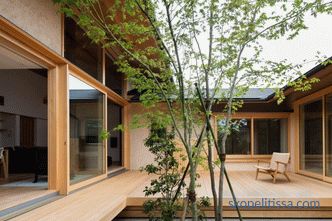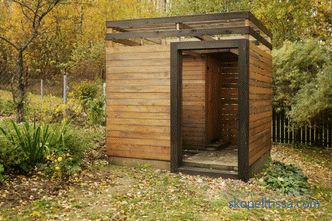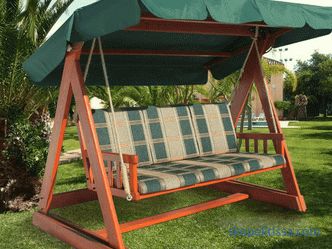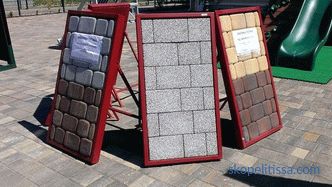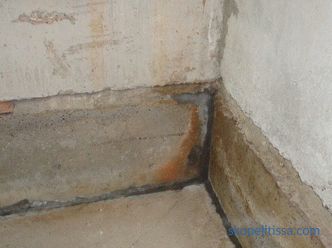Wooden buildings retain heat well. But if in conditions of a warm climate there are enough natural properties of wood in order to maintain comfortable conditions in the house, then in regions with low winter temperatures the house needs to be further warmed. The installation of the heat insulator is carried out on the walls, floor, ceiling - if you leave any surface uncoated, the insulation of the wooden house from the inside will be less effective. It would be most correct to make the insulation even during construction - it is much more difficult to carry out work in the lived-in room
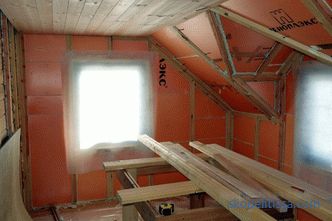
When installing insulation , between it and the finish must be left a gap for air circulation. This helps prevent the accumulation of moisture in the rooms, mold and mildew.
How are wooden houses insulated?
Most of the houses from timber inside are insulated with various types of construction wool - basalt (mineral), fiberglass and others. These are light and affordable materials that are environmentally friendly. The industry produces rolled and block wool types.
Basalt wool retains heat well, but passes air. Due to this quality, fungus and mold do not appear in the rooms.
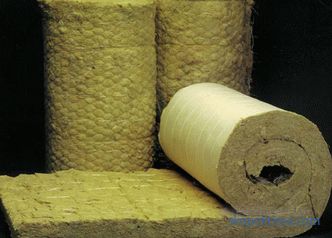
Glass wool absorbs a lot of moisture, so in order to avoid condensation, for her make an additional layer of waterproofing. The big disadvantage of glass wool is its complex structure. The material is saturated with a large number of glass microparticles (hence the name). When working with cotton, they get into the respiratory organs, on clothing. For safe work with glass wool, special clothing and a respirator are necessary.
All types of wool are easy to install. To install a heat insulator of such material does not require high qualifications. Rolled types of wool have a high plasticity, but they are less dense in comparison with block ones. When working with rolled materials, you can cut off the required amount of insulator. Tiles are made of the same size, so during the installation of the batten, the dimensions of the pieces are taken into account.
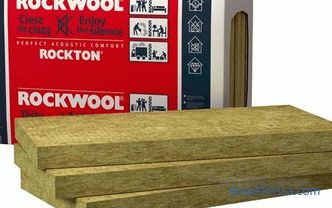
Warming of wooden walls is also carried out with foam or expanded polystyrene.
Polystyrene foam is popular because of its low cost. In addition, it is easy to work with him and he retains heat well. It is a good sound insulator. The disadvantage is the allocation of material toxic substances during combustion.
Preparatory work
How to properly insulate the walls of a wooden house from the inside depends a lot on the right materials. If this issue is resolved, then you can proceed to the preparatory work, which is to prepare the surface and the manufacture of crates.
For reference! When preparing the surface, it is necessary to seal the gaps that could appear between the bars or logs. For this you will need additional materials: tow, felt or polyurethane foam.
Wooden sticks are most often used as a batten. Less commonly mounted metal crate. Metal for the batten should be coated with an anti-corrosion compound.
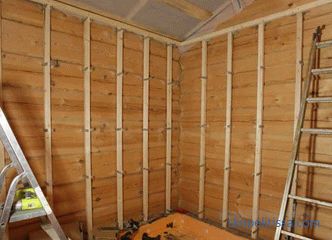
Preparation of wooden surfaces
For high-quality application of an insulator, prepare the surface for coating with insulation. In the slots are placed tow / felt / foam. After the gap is completely closed, the foam has dried and its excess has been removed, putty is applied to the wall. Layer putty carefully aligned. The wood is covered with a special compound that protects against damage by mold and fungus. All wooden surfaces before installing insulation process fire-fighting composition.
On our website you can familiarize yourself with the most popular projects of wooden houses from construction companies represented at the exhibition “Low-Rise Country”.
Technology of insulation with basalt cotton
After the walls (ceiling) have dried after processing, proceed to the installation of insulation.
Work steps for wall insulation with basalt wool :
-
The extreme elements of the battens are determined. They are carefully checked with a level and plumb, as their installation depends on their position.
-
Fix the first vertical bar with screws and dowels.
-
At a distance of 1 m, the following vertical strips and so on are fixed, until the entire surface is covered with crate. For mounting cotton wool, the installation of the batten is completed at this stage.
-
If there are windows or doorways on the wall, separate bars are installed along their perimeter.
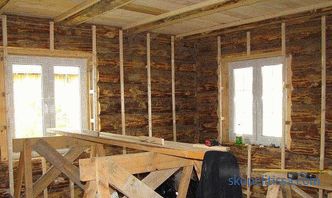
-
To install lumpy heat insulator make a grid with horizontal elements.On the vertical grid obtained at an equal distance fill horizontal strips. The distances between the bars should correspond to the dimensions of the insulation. Got a grid for the installation of insulation.
-
In the cavity between the fixed strips cotton are placed. When installing the insulator on the walls do not use glue or other means for fixing. If the crate is made correctly, then the wool will fit snugly to the surface, but you need to remember about the ventilation gap. If the ceiling is insulated, the insulation will have to be fixed.
Any wool has a porous structure, so it accumulates moisture. Therefore, when warming a wooden house with cotton wool, it is imperative to coat it with vapor barrier. When installing the roll material, cut off the required length and fix it on the wall. Before starting work, you should calculate how much material is needed to insulate a wooden house. Add 10% to the received number.
On our website you can find contacts of construction companies that offer a house insulation service. Directly to communicate with representatives, you can visit the exhibition of houses "Low-rise Country".
Installation of foam
Polyfoam is rarely used as insulation. Despite the fact that the material has a low thermal conductivity and it retains heat well with a small thickness, it is considered an economical option.
Some thoughts about the use of foam and expanded polystyrene look in the video:
In particular, there are many complaints about the release of toxins during combustion, plus , it is believed that the foam and at ordinary temperatures evaporates harmful substances into the air.
The material does not let in steam well and in a room without good ventilation, moisture will constantly accumulate.
A relatively easy installation can be attributed to the pluses of the material, which means that workers will not be required to have high qualifications, and the cost of work will be lower.
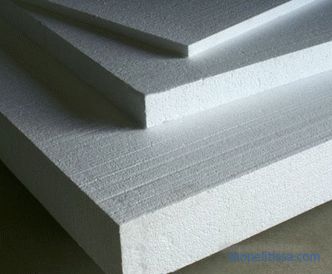
Stages of installation of foam :
-
A crate is installed on a pre-prepared surface with a step of strips equal to the size of the foam plates. Begin installation with load-bearing walls.
-
Polystyrene is placed between the bars with the ventilation gap remaining.
-
The membrane film is fixed on top of the insulation. If for other insulators it is possible to use other materials, a special film with membranes is chosen for the foam plastic. She will allow to keep in a room a normal microclimate.
-
Finish the installation of insulation with finishing works .
It can be interesting! In the article on the following link read about the insulation of a foam block house.
Floor insulation
Concrete floor must be warmed. Wooden cover with insulator at will, but after insulation, the room will be much warmer.
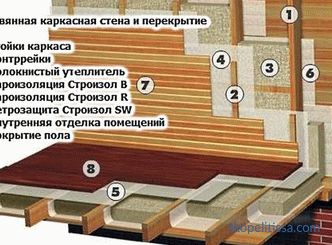
In wooden houses, heat insulation is laid on the draft floor and a floor floor is already installed on top.
A membrane with a membrane made of polyethylene is used as a vapor barrier. Popularly popular insulation using roofing. This material is known for a long time, it is cheap, well protected from moisture, durable.
Mineral wool is used as a heater for the floor. It is cheap, easy to install, durable, has good heat and sound insulation properties. In addition, a relatively new material is increasingly being used - expanded polystyrene, which gradually displaces cotton wool from the building materials market.
The sequence of actions when installing insulation on the floor of a wooden house.
-
Aligns the surface under the insulation.
-
A waterproofing / steam insulator is installed, the task of which is to prevent moisture coming from outside from the insulation. In regions with wet ground this stage should be given special attention.
-
Set the lag . The lag thickness must be at least 5 cm. The distance from the wall is 30 cm. The distance between the bars is 50 cm.
-
Between the lags insulation is laid. The presence of voids between individual pieces of the insulator is not allowed.
-
From above, a vapor barrier film is laid on the insulation.
-
After the formation of all layers, the finishing floor is laid.
How is the installation of insulation on the walls of a wooden house from the inside, see in the video:
Vapor barrier
If there is a need to install a vapor barrier, it is better to use a special film with a membrane.
It will allow the walls to pass air normally, and after installation no condensate will accumulate inside the “cake”. To install the vapor barrier on the insulation impose a film or polyethylene. Along the edges make an allowance.
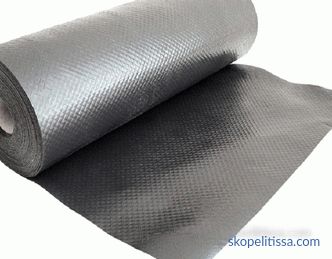
Elimination of heat losses
The weakest points from the point of view of cold penetration are joints. There should be no gaps between individual pieces of insulation. Insulating material is placed tightly to the crate. For floor insulation, the important point is the connection with the walls. In these places, laying insulation is carried out with a slight overlap on the wall and fixed.
When applying a vapor barrier, ensure that each layer of material overlaps the previous one with a slight overlap.
Insulating material is applied directly between the wooden bars before insulating the walls of the wooden house from the inside. For this purpose, well-known materials are used - tow, flax rope, flax. You can fill the joints of the bars with modern sealants - latex, acrylic, rubber.
Also, to reduce heat losses in a wooden house, use the "warm joint" method.
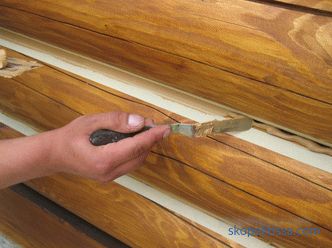
It may be interesting! In the article on the following link read about facade insulation private house.
Conclusion
In spite of the fact that previously it was thought that it was necessary to insulate a wooden house exclusively from the outside, modern materials make it possible to carry out high-quality insulation of the building from the inside. With such insulation, the exterior design is not disturbed and work will not be required to be carried out at a height if the house is two-storey or with an attic. The main thing is to choose the right material for the insulation and entrust the work to professionals who know all the additional nuances. For example, they can calculate where the dew point will be after the insulation, so that condensate does not form directly inside the wall.
